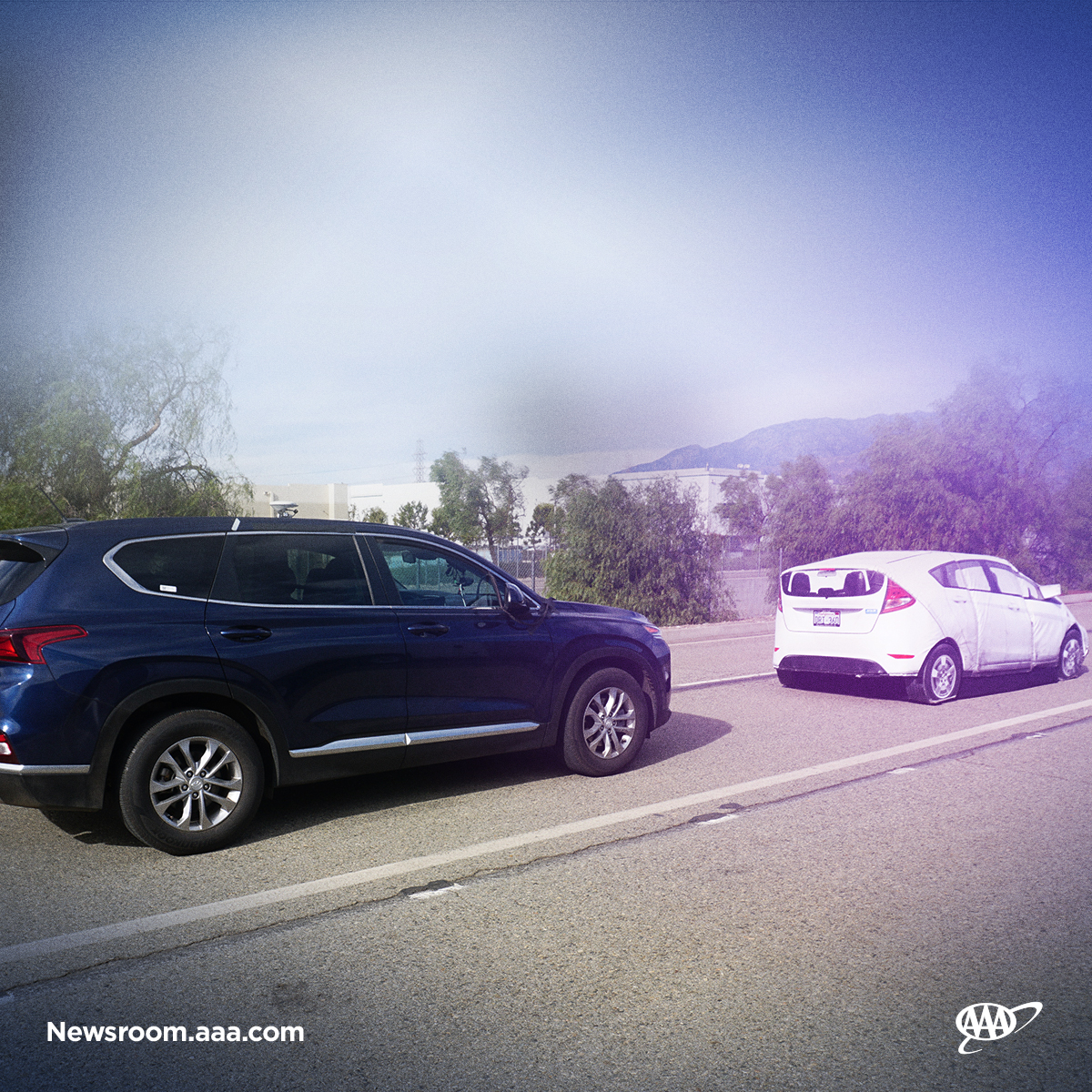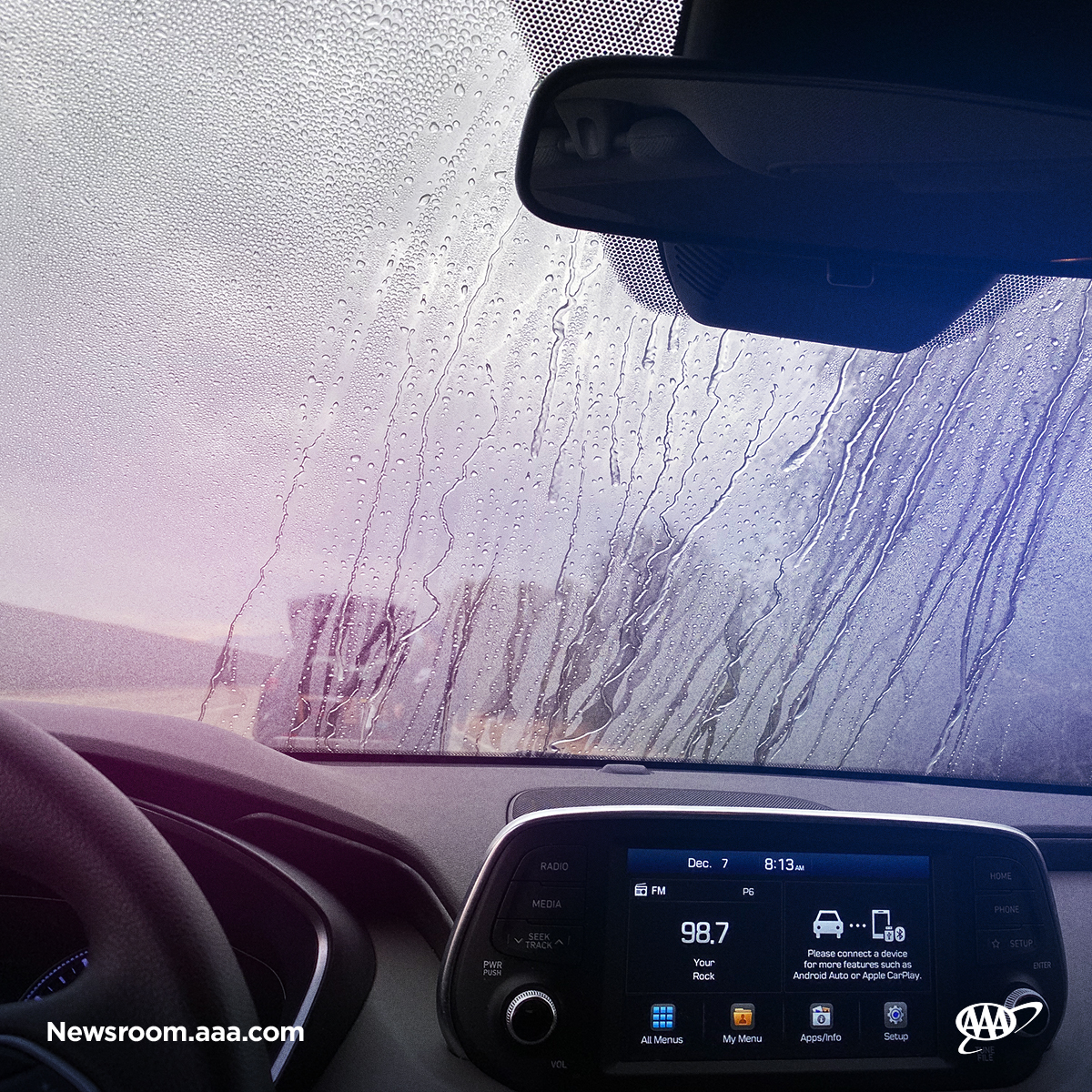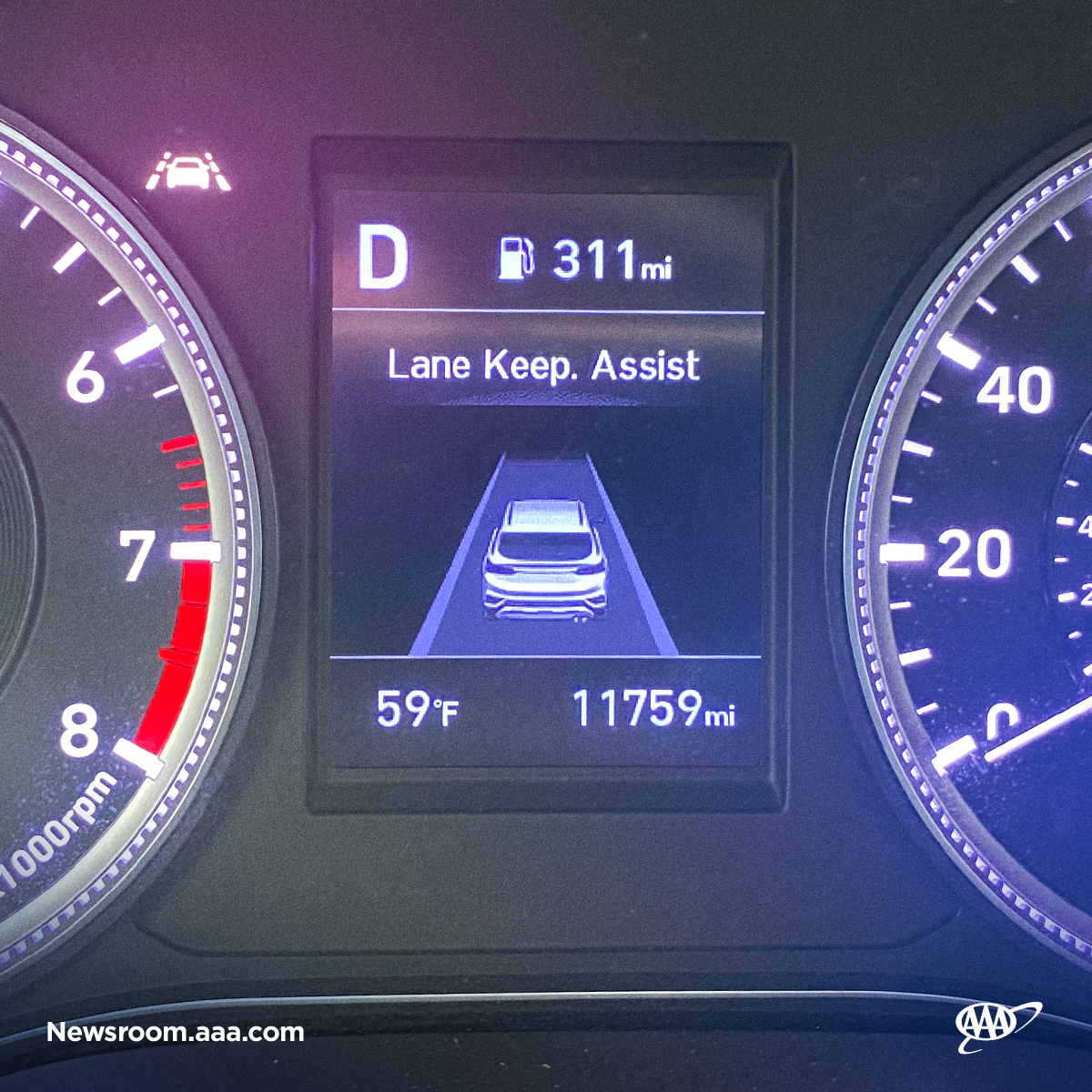PORTLAND, Ore., – New research from AAA finds that rain diminishes the performance of advanced driver assistance systems (ADAS). These include vehicle technologies such as automatic emergency braking and lane keeping assistance.
During closed course testing, AAA simulated rainfall and found that test vehicles equipped with automatic emergency braking traveling at 35 mph collided with a stopped vehicle one third (33%) of the time. Lane keeping assistance didn’t fare any better with test vehicles departing their lane 69% of the time.
Here are B-roll video and the full report.
Vehicle safety systems, also known as advanced driver assistance systems or ADAS, are typically evaluated in ideal operating conditions. However, AAA believes testing standards must incorporate real-world conditions that drivers normally encounter.
“Vehicle safety systems rely on sensors and cameras to “see” road markings, other vehicles, pedestrians, bicyclists, and other obstacles. But things like rain, dirt and bugs prevent the sensors from detecting these things,” says Marie Dodds, public affairs director for AAA Oregon/Idaho. “Obviously, most of us aren’t always driving around in nice weather and perfect conditions. So testing must be expanded to include the situations we all encounter in everyday driving.”
A majority of new vehicles are equipped with at least one ADAS so it’s important for drivers to understand how these systems work, and the conditions in which they don’t perform well. Most of all, AAA testing shows these systems can’t replace an alert driver.
AAA Research Shows Rain has the Biggest Effect on Vehicle Safety Systems
AAA, in collaboration with the Automobile Club of Southern California’s Automotive Research Center (ARC), simulated rain and other environmental conditions (bugs and dirt) to measure impact on the performance of ADAS like automatic emergency braking and lane keeping assistance. Generally, both systems struggled with simulated moderate to heavy rain, with results showing:
Automatic emergency braking engaged while approaching a stopped vehicle in the lane ahead
- In aggregate, testing conducted at 25 mph resulted in a collision for 17% of test runs
- In aggregate, testing conducted at 35 mph resulted in a collision for 33% of test runs
Lane keeping assistance engaged to maintain the vehicle’s lane position
- In aggregate, veered outside of the lane markers 69% of the time
During testing with a simulated dirty windshield (stamped with a concentration of bugs, dirt and water), minor differences were noted, however, performance was not negatively impacted. However, AAA’s testing found that ADAS cameras can still be influenced by a dirty windshield. It is important drivers keep their windshields clean for their own visibility and to ensure their ADAS system camera is not obstructed.
Also, some systems may provide an alert or deactivate in extreme situations, however the conditions AAA tested under provided no such alert or warning.
To simulate rainfall, AAA engineers designed a system using a reservoir to hold water, a high-pressure pump for a consistent flow of water and a precision injector nozzle to spray the windshield. This system was secured in the cargo area of the test vehicle and was connected to a nozzle positioned above the windshield so that the spray pattern covered the entire windshield. It should be noted that water sprayed by this system did not reach the pavement or interact with the test vehicle’s tires.
ADAS Not a Replacement for an Engaged Driver
AAA’s research continues to show that vehicle safety system performance varies widely, reinforcing that they are not a replacement for a fully engaged driver.
“These systems have the ability to lessen the chance of a crash and improve the overall safety of driving, but they can’t take over the task of driving—that’s still up to the driver,” says Dodds.
Previous AAA testing of vehicle safety systems in both closed-course and real-world settings show that performance is greatly impacted by driving scenarios, road conditions and vehicle design, finding issues including the following:
- Struggling to stay within in a marked lane in moderate traffic, on curved roadways and on streets with busy intersections
- Failing to stop for pedestrians in common scenarios like crossing in front of a vehicle, a child darting out between two parked vehicles, or walking at night
- Colliding with a simulated disabled vehicle and instances of coming too close to other vehicles or guardrails
Optimizing Use of Vehicle Safety Systems
It’s essential for drivers to be familiar with how their vehicles’ systems operate. AAA urges drivers to take time to read the vehicle owner’s manual and/or watch videos to learn when, where and how to use them. The vehicle owner’s manual or online materials provided by the automaker are the best resource for understanding the ins and outs of an individual vehicle’s safety system. It will give clear guidance on when and where the system operates best, as well as how to use it properly.
Vehicles with ADAS cameras located behind the windshield, like those used in this research, “see” the same things a driver does. If the windshield wipers are worn and streak across the window, this could interfere with the system’s performance. Drivers should regularly inspect their wipers and replace at the first sign of streaking, chattering or if the blades appear hard and brittle. A good rule of thumb is to replace each year, especially in hot, sunny climates or if a vehicle sits outside all day.
Wet conditions present challenges to drivers regardless of whether their vehicles are equipped with safety systems. AAA recommends using extra caution in slick conditions by doing the following:
- Keep windshield clean and ensure that wipers are not streaking the windshield.
- Slow down and avoid hard braking and sharp turning. If possible, follow in the tracks of other vehicles.
- Increase following distance to 5-6 seconds behind the vehicle ahead.
- AAA recommends not using cruise control when driving in inclement weather such as rain or snow. This will allow you to respond quickly if the car’s tires lose traction with the road.
- If the car begins to hydroplane or skid, ease off the accelerator to gradually decrease speed until the tires regain traction, and continue to look and steer where you want to go. Don’t slam on the brakes—this can cause further traction loss.

ADAS don’t always detect a stopped vehicle.

Rain has the biggest effect on vehicle safety systems.

Things like rain, bugs and dirt can impede performance of ADAS.

Lane Keeping Assistance doesn’t work as well in the rain.
About AAA
AAA provides more than 62 million members with automotive, travel, insurance and financial services through its federation of 30 motor clubs and nearly 1,000 branch offices across North America. Since 1902, the not-for-profit, fully tax-paying AAA has been a leader and advocate for safe mobility. Drivers can request roadside assistance, identify nearby gas prices, locate discounts, book a hotel or map a route via the AAA Mobile app. To join, visit AAA.com.
AAA news releases, high resolution images, broadcast-quality video, fact sheets and podcasts are available on the AAA NewsRoom at NewsRoom.AAA.com.
Find local news releases at https://oregon.aaa.com/community/media/media-contacts.html

